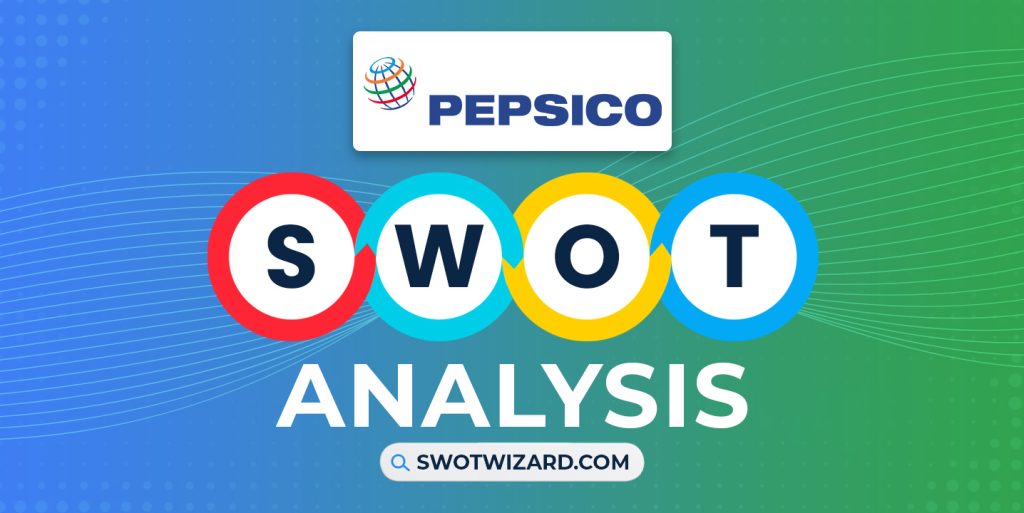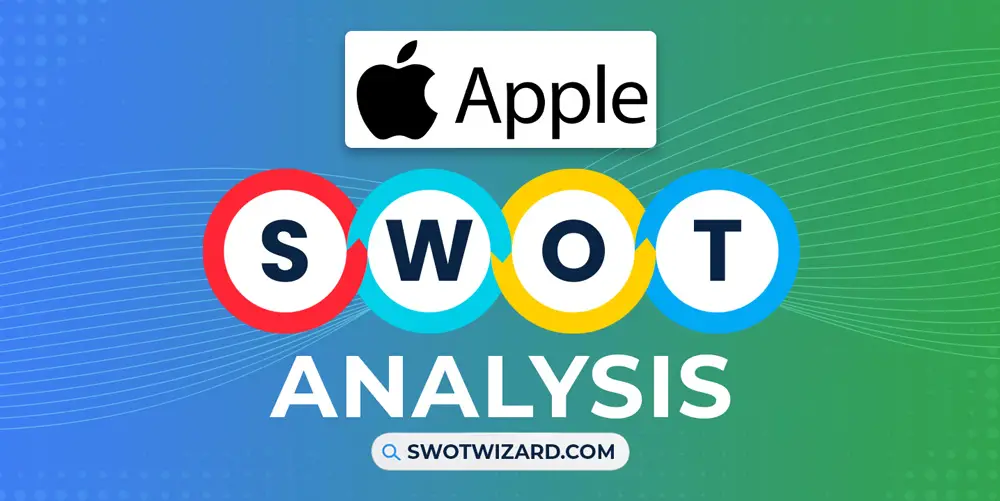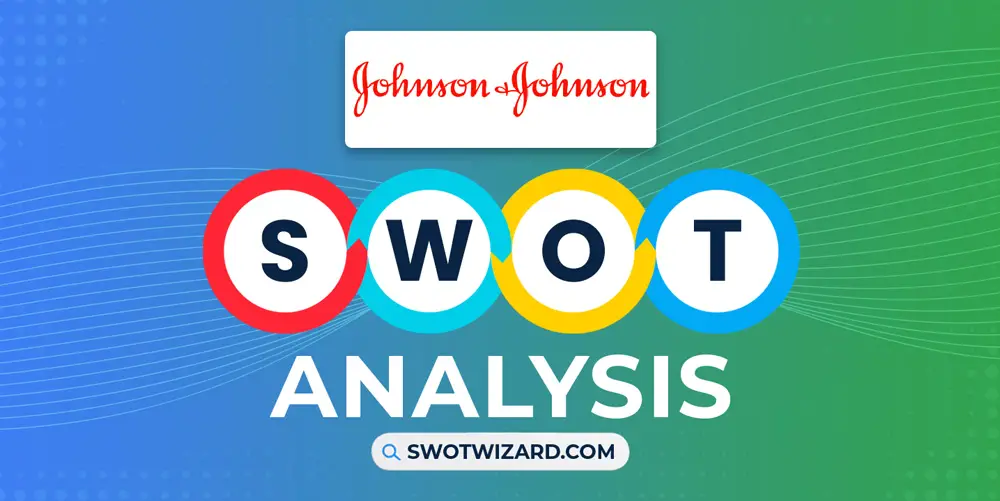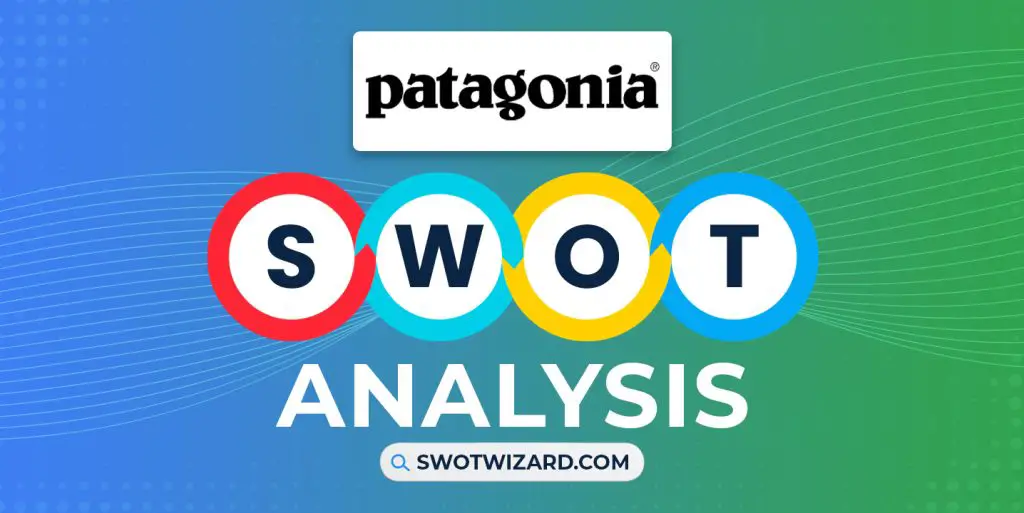Pepsi and its iconic red, blue white logo have been in our mind whenever we think about a bottled carbonated beverage. Being one of the largest companies in the world and reaching every corner of the globe, it has become a part of our daily life somehow. And we will learn that in this Pepsi SWOT analysis.
Pepsi: Company Overview
| Company | PepsiCo, Inc. |
| Industry | Beverages, Food Processing |
| Founded | 28 August, 1898 |
| Founder | Caleb Bradham |
| Chairman & CEO | Ramon Laguarta |
| Headquarter | Harrison, New York, U.S. |
| No. of Employees | 315,000+ |
| Annual Revenue | $86.4 billion (FY 2022) |
| Website | pepsico.com |
Pepsi is a global food and beverage company founded in 1898 by Caleb Bradham and has a widespread presence in over 200 countries and territories.
The company’s diverse portfolio includes well-known brands like Pepsi, Mountain Dew, Lay’s, Gatorade, Tropicana, and Quaker. With a strong workforce, the company employs around 315,000 people worldwide and reported revenues of $86.39B in 2022.
Product & Services of PepsiCo
Pepsi | Mountain Dew | Lay’s potato chips | 7 Up | Doritos tortilla chips | Quaker foods and snacks | Mirinda | Ruffles potato chips | Aquafina bottled water
PepsiCo Competitors
Coca Cola | Keurig Dr Pepper | Monster Beverage Corp | General Mills | Conagra | Unilever | Nestlé | RedBull | Britvic | Danone
Did You Know?
In the late 1980s, as part of a marketing campaign called “Pepsi Navy,” PepsiCo briefly owned a fleet of submarines, boats, and warships. The company exchanged soda syrup for military equipment with the Soviet Union, as the USSR faced a foreign currency shortage.
Strengths – Pepsi SWOT Analysis
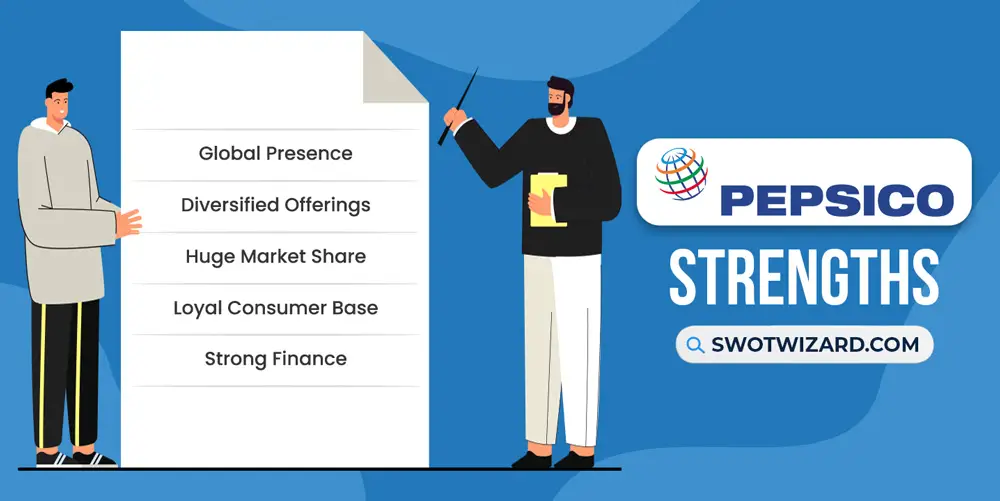
Global Presence: It’s hard to find a country that doesn’t have Pepsi. Operating in over 200 countries, the company has established a strong international presence. Because of that, It benefits from its global reach, enabling market penetration and access to diverse consumer preferences. As a matter of fact, nearly 47% of the revenue comes from the international market on average in the last five years.
Diversified Offerings: There is almost everything or the type of product in their portfolio, as Pepsi offers a wide range of beverage options, including carbonated soft drinks, juices, sports drinks, and teas. Besides, its portfolio includes brands like Mountain Dew, Gatorade, Tropicana, and Lipton. It ensures a comprehensive product lineup and enables the company to cater to consumer preferences and tap into various market segments.
Huge Market Share: Being one of the oldest and largest beverage companies, Pepsi captured a huge market share. Pepsi had a 29% market share in carbonated soft drinks as of 2022, closely competing with its rival Coca-Cola. On the other hand, Pepsi’s global market share is around 9%, growing yearly.
Loyal Consumer Base: Because of the company’s long-standing brand reputation and effective marketing campaigns, Pepsi has grown its loyal customer base. Besides, the brand’s association with sports, music, and popular culture has helped it connect with consumers emotionally, as they sponsor major sporting events like the Super Bowl, and partnerships with high-profile celebrities have contributed to its strong brand loyalty.
Strong Finance: The huge market share, global presence, and loyal customer base have allowed the company to maintain a strong and steady cash flow. The company reported net revenue of $86.39B and a net income of $8B in 2022, allowing Pepsi to invest in research and development and expand into new markets.
Weaknesses – Pepsi SWOT Analysis
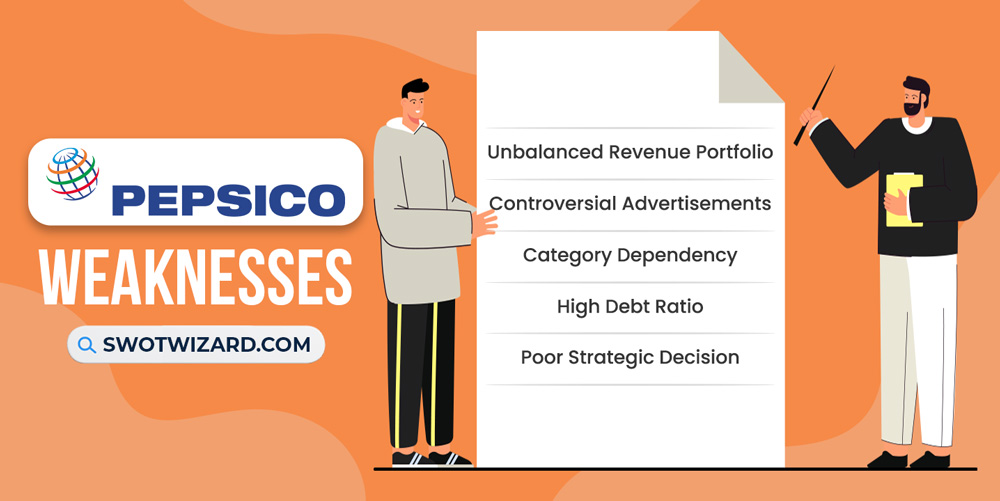
Unbalanced Revenue Portfolio: Although the company has strong finance, the revenue portfolio seems slightly unbalanced. According to the financial data from the last few years, most revenue comes from a few specific markets, such as America and Europe. As a result, if any economic downturn or something happens, the company’s revenue will be affected greatly.
Controversial Advertisements: The company has faced criticism for certain advertising campaigns that sparked controversy, such as the widely criticized Kendall Jenner ad a few years back. Incidents or advertisements like this can damage the brand image and lead to a loss of consumer trust, affecting long-term growth prospects.
Category Dependency: The company’s reliance on the carbonated soft drink category poses a challenge in an era where consumers increasingly seek healthier beverage options. Even though the company introduces various healthier options, Pepsi faces intense competition from brands offering healthier alternatives, which could impact market share and revenue growth. Besides, the other snack segments aren’t growing as much as the drink segment.
High Debt Ratio: Even after the steady cash flow and strong finance, Pepsi’s debt ratio has been relatively high, which can restrict financial flexibility and increase interest expenses. The company’s total debt stood at $37.486B in 2022, representing a debt-to-equity ratio of 2.451, indicating a substantial debt burden.
Poor Strategic Decision: Every company makes bad decisions, but Pepsi has been making these for years constantly. One of the reasons the company couldn’t match Coca-Cola’s presence and distribution tactics is because they couldn’t act fast or in advance. As a result, Pepsi always lagged in the game, not to mention its poor acquisition strategies that cost the company billions.
Opportunities – Pepsi SWOT Analysis
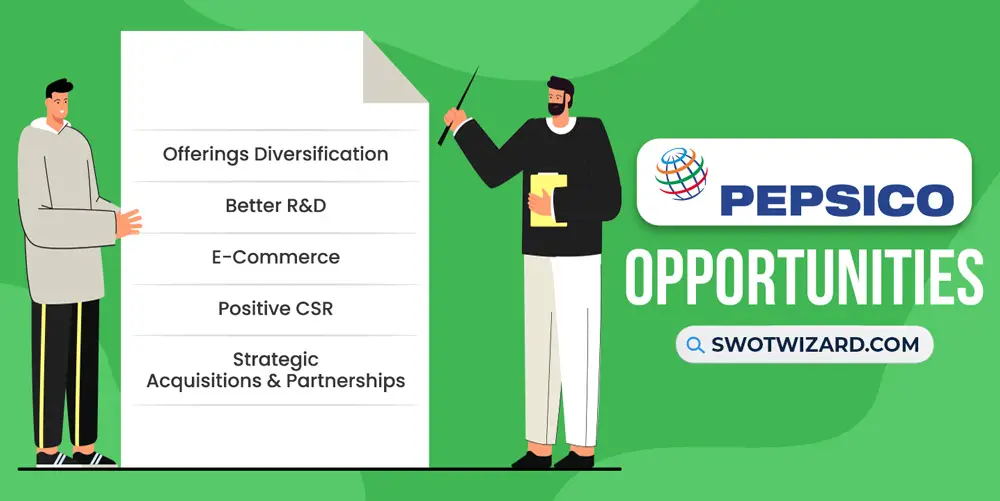
Offerings Diversification: As consumer preferences and trends change, expanding product lines and entering new markets can drive growth. As a part of the plan, Pepsi introduced healthier options like Baked Lay’s and Tropicana Essentials to cater to health-conscious consumers, increasing sales and market share and contributing to a 6% revenue growth in 2022.
Better R&D: No matter which industry your company is in, people always want something new and better. And to do that, investing in research and development enables innovation and the creation of unique products. That’s why Pepsi has been investing heavily in R&D, and investment reached $711M in 2022.
E-Commerce: After the pandemic, the entire e-commerce game has changed. And after that, embracing online platforms allowed Pepsi to reach a broader customer base. As a matter of fact, the company has witnessed a surge in online sales by a huge margin, and it’s growing rapidly and leveraging partnerships with platforms like Amazon to enhance distribution and reach.
Positive CSR: Beverage companies have always been responsible for all plastic pollution, and it has been negatively affecting the brand’s reputation. To tackle that, Demonstrating strong corporate social responsibility practices can enhance brand reputation and consumer loyalty. Pepsi’s “Performance with Purpose” initiative promotes sustainability, reduces environmental impact, and supports communities through water conservation and nutrition programs.
Strategic Acquisitions & Partnerships: It has always been a great idea to acquire companies and do partnerships that can provide access to new markets, technologies, or distribution channels. Not just Super Bowl sponsorship but partnering with a successful plant-based beverage company can help Pepsi enter the growing plant-based market swiftly and effectively, and collaborations like their joint venture with Strauss Group in the snack food sector demonstrate successful strategic partnerships.
Threats – Pepsi SWOT Analysis
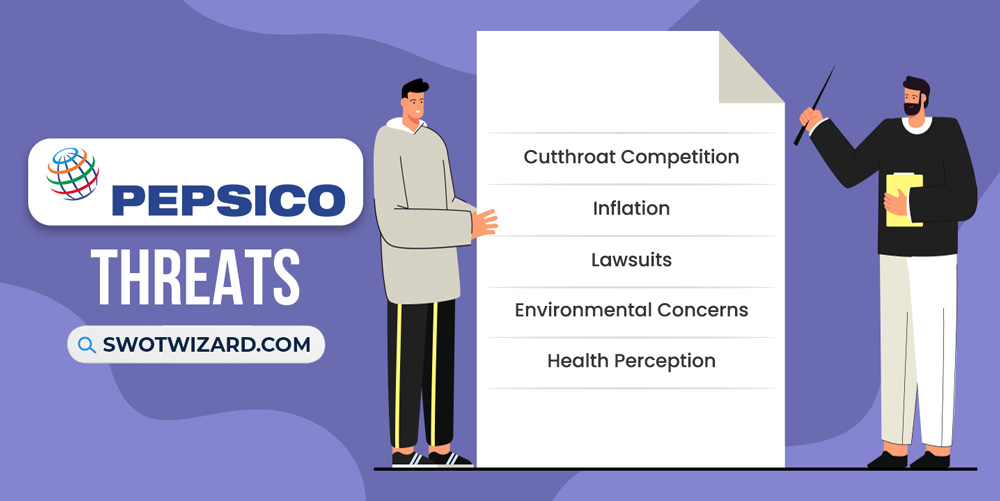
Cutthroat Competition: Being the market follower and cutthroat competition from rivals like market leader Coca-Cola, Dr. Pepper Snapple Group, and regional/local brands is difficult. If we look at the data, Coca-Cola held a global market share of 40%. In comparison, Pepsi’s market share was around 27%, indicating Coca-Cola’s larger market presence than Pepsi.
Inflation: The cost of everything is rising, and one of the primary reasons is worldwide inflation. Rising inflation is increasing production and distribution costs for Pepsi, squeezing profit margins. As a result, prices of raw materials, packaging, and transportation are impacting profitability and pricing strategies, potentially leading to reduced consumer demand.
Lawsuits: Being a large company, it’s difficult to keep an eye on everything, and the company has been facing various lawsuits for the last few years. A few years back, Coca-Cola and Pepsi were sued for plastic pollution. Besides that, the company has been fighting a lawsuit over trademark infringement by Coffee drink maker Rise Brewing, among other lawsuits.
Environmental Concerns: As a major producer of plastic beverage bottles, the company faces pressure to reduce plastic waste and embrace eco-friendly packaging alternatives to mitigate environmental risks. Even though they are promising and committed to using recycled plastic in a few years and doing CSR, those aren’t enough.
Health Perception: Even a couple of decades ago, eating unhealthy was glorified, but now, it’s not. Changing consumer preferences towards healthier options and growing concerns about the health impacts of sugary beverages affect the entire industry share. And from the consumer’s perspective, they are increasingly opting for healthier alternatives, including bottled water, plant-based beverages, and low-sugar options.
[Bonus Infographic] SWOT Analysis of Pepsi
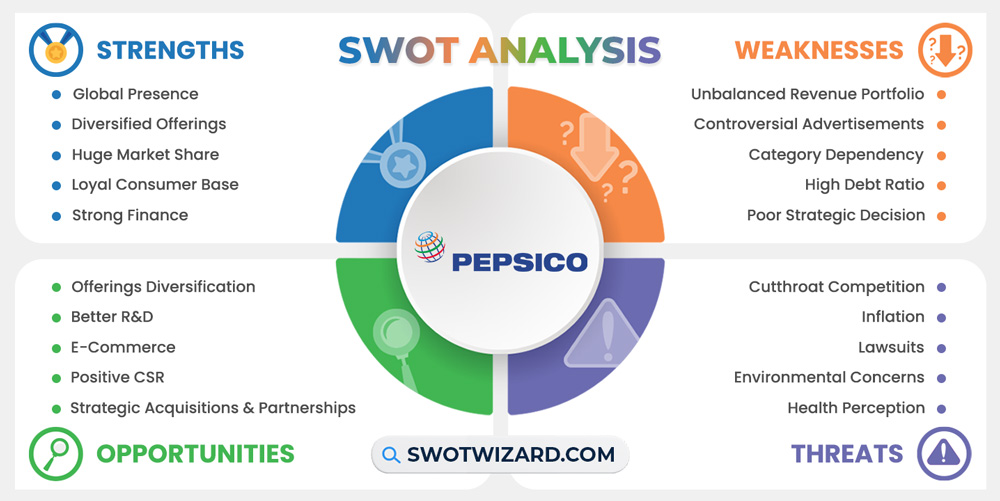
Recommendations for Pepsi
With the highly competitive market and fighting with all those giant competitors, it’s difficult for Pepsi to stay in the game and increase its market share.
- Expand the product portfolio by introducing healthier and more diverse options, such as low-sugar beverages, organic snacks, and plant-based alternatives.
- Focus on developing new flavors, ingredients, and packaging technologies that align with consumer trends and preferences.
- Focusing on e-commerce to reach more customers and drive growth is always a good idea.
- Deepen the commitment to corporate social responsibility by prioritizing sustainable sourcing, environmental conservation, and community engagement.
Frequently Asked Questions (FAQs)
Where is Pepsi most popular?
Pepsi is the most popular in Mexico.
Is Pepsi or Coke cheaper?
Pepsi is cheaper than Coke.
Final Words on Pepsi SWOT Analysis
With its iconic brand and global presence, Pepsi has a range of opportunities to explore. By diversifying offerings, investing in R&D, embracing e-commerce, promoting positive CSR, and pursuing strategic acquisitions, PepsiCo can adapt to consumer preferences, drive innovation, and maintain a competitive edge in the dynamic beverage industry.
References
- Wikipedia contributors. (n.d.). PepsiCo. Wikipedia.
- Victor, D. (2017, April 5). Pepsi pulls ad accused of trivializing Black Lives Matter. The New York Times.
- Lucas, A. (2023, July 13). PepsiCo beats earnings estimates, raises full-year outlook even as higher prices hurt demand. CNBC.
- Lucas, A. (2022, January 19). PepsiCo and Beyond Meat’s joint venture will reportedly launch a plant-based jerky. CNBC.

